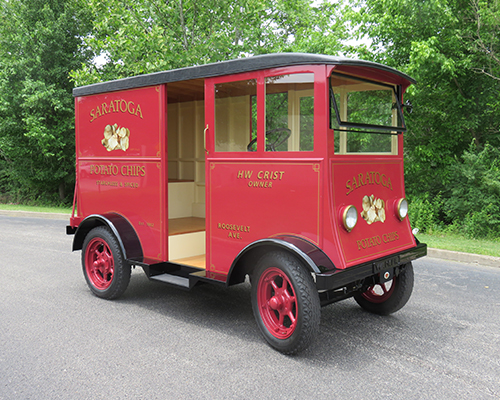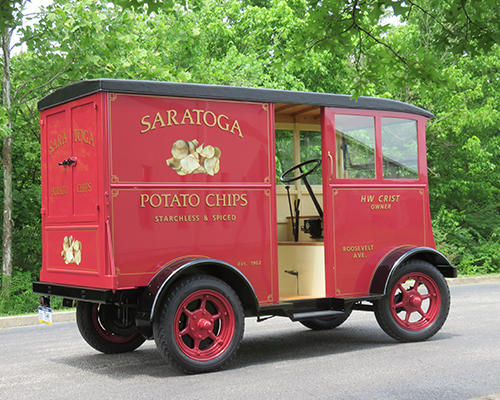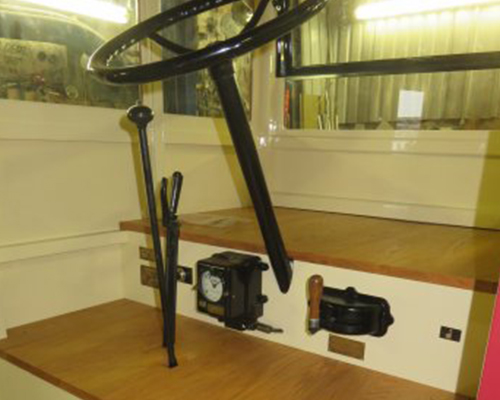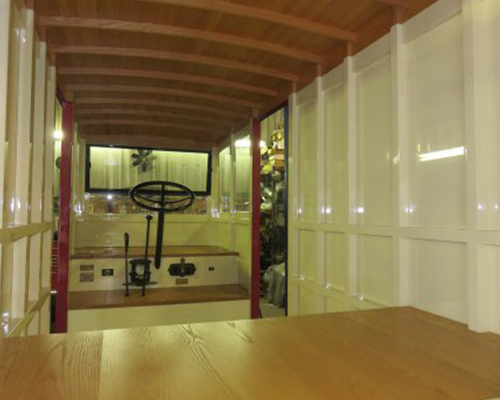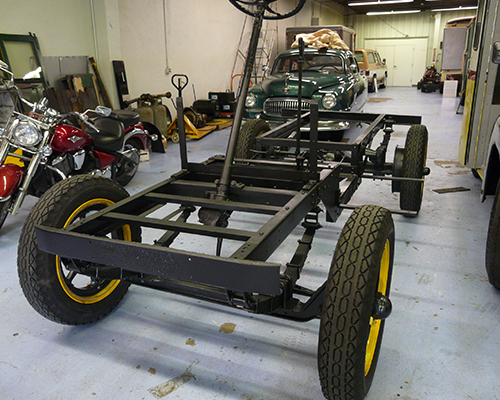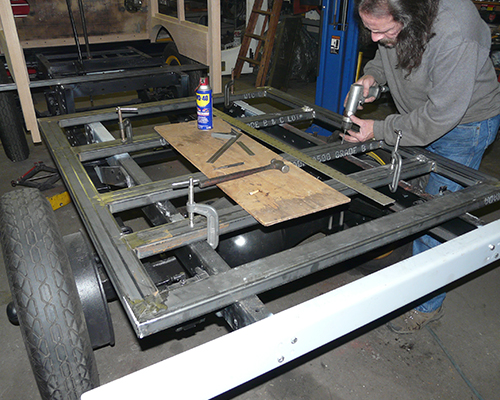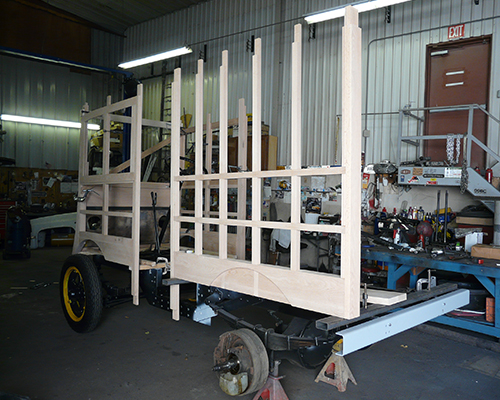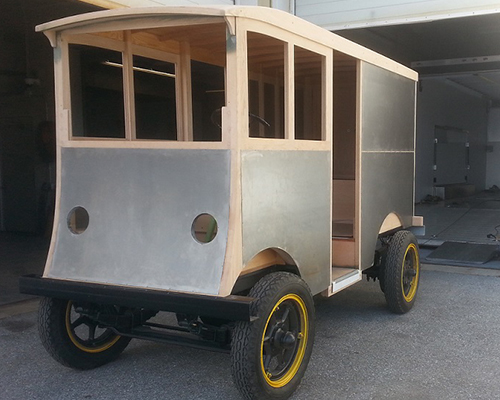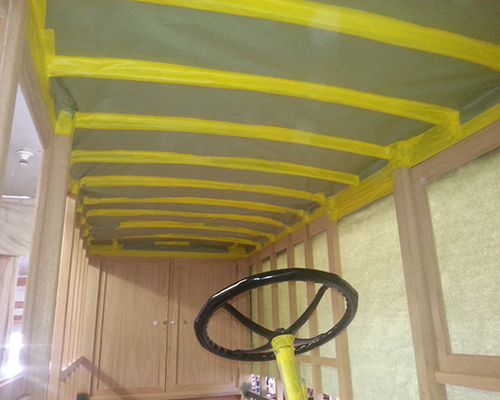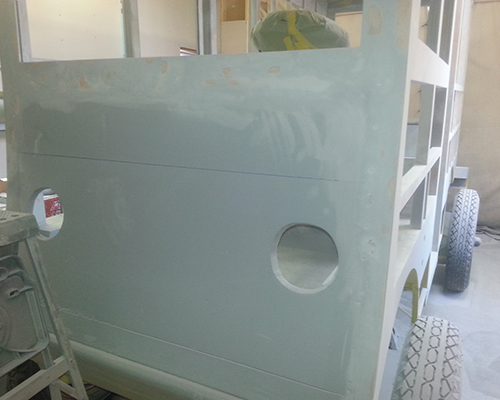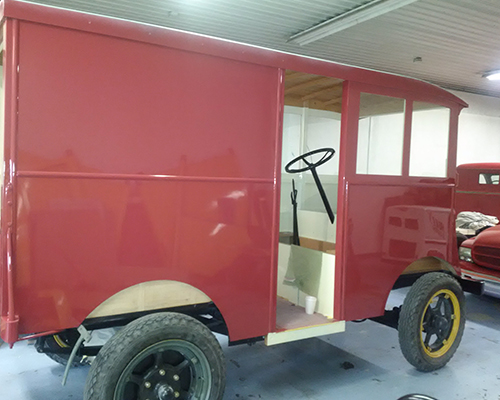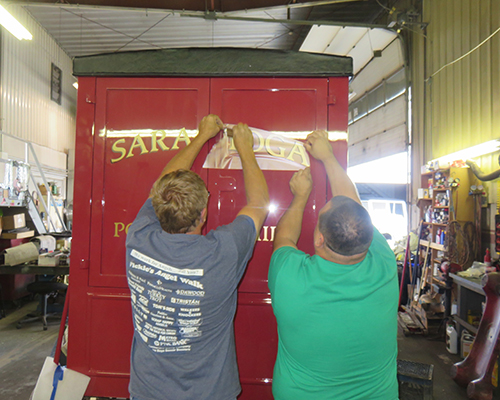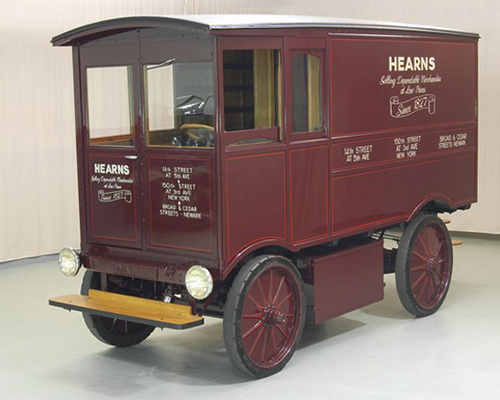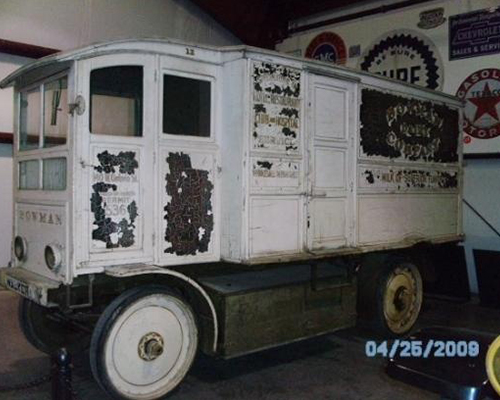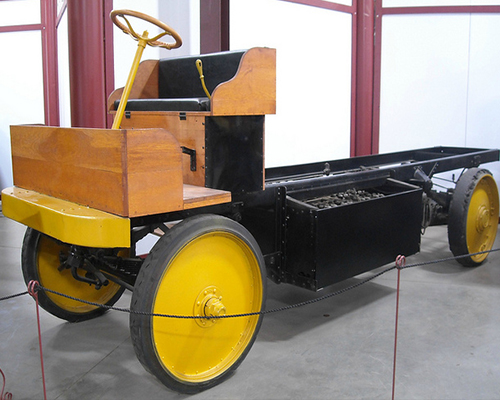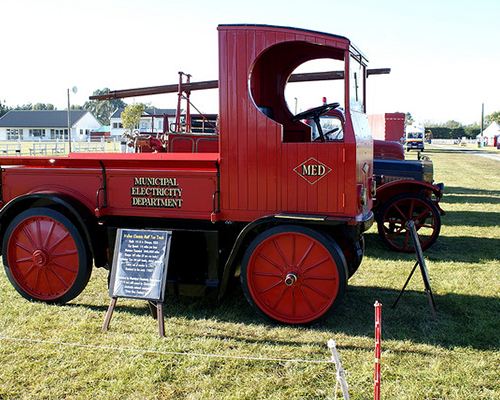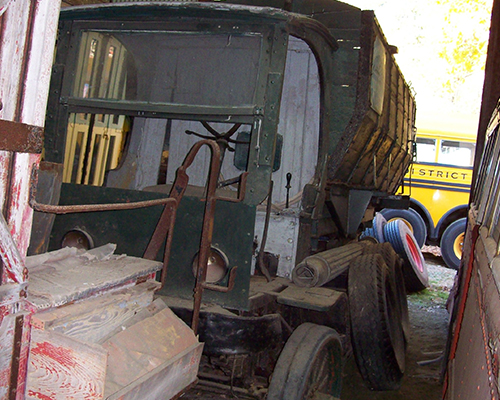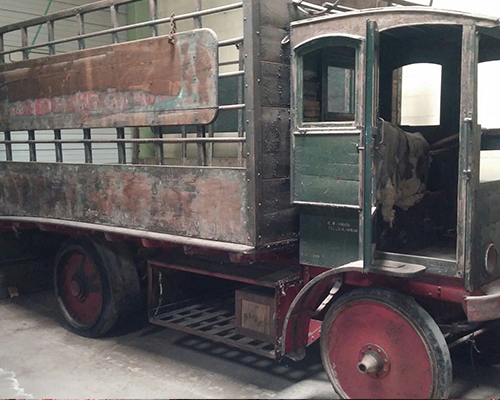The Walker Electric Company was located in Chicago, Illinois and started their first truck production in 1907. Through the years the company was bought out by a couple different companies and the last company to buy them was the Yale Fork Lift Truck Company. In 1938 Walker introduced the Gas/Electric Truck to replace their battery operated trucks and this production continued until 1942 when production of all USA manufacturing companies had to turn all of their production into manufacturing products for World War II.
Walker manufactured many different models of trucks and these trucks were sold all across the USA and even to Britain and New Zealand. These trucks had a 3.5 HP electric motor that was powered by many batteries to produce 66 to 80 volts and a maximum of 40 amps. The driving range of these trucks was about 30 to 35 miles and the maximum speed was 10 to 12 MPH. The trucks were plugged into a charging station in the evening after the daily deliveries were completed.
These trucks were a welcome relief for the general public and the delivery companies. Previously the deliveries were made by horse and wagon. The horses were not the most sanitary because of their daily habits of relieving themselves anywhere they felt like it along the routes. This didn’t make the customers too happy. The horses were loyal in the task of pulling the wagons but their pace was slow compared the trucks. The first companies to use this style of delivery were dairies, bakeries, US Mail, retail store and freight companies. Marshall Field and Company had a fleet of 276 electric Walker Trucks in 1925.
Of all the Walker Electric (battery operated) Trucks built from 1907 to 1942, at the present time there are ten Walker Electric trucks known to be in existence. All ten of the Walker Electric trucks appear to be of a different model. My 1919 Walker truck is the only one of these ten trucks that is a Stand & Drive LA-10 model. One Walker is a pickup in New Zealand, one is a delivery van that was used in New York, one is an original Bowman’s Dairy cab/chassis with insulated body that is on display at the Iowa I-80 Truck Stop Museum. The Museum also has a big stake body Walker truck but I don’t have a picture of it at this time. One is a frame/chassis only in a museum in the west coast, I think there is one in the New England area, NATMUS museum in Auburn IN has freight truck, Boyertown Museum in Boyertown, Pa. has truck tractor from Edison Industries in New Jersey and the Seashore Trolley Museum in Maine has two big Ice Delivery truck (plus a 1918 Walker truck for parts only).
This 1919 LA-10 Walker truck was owned by a man in Ohio for over 40 years. He painted the truck, installed new tires, replaced some wood panels and installed new batteries. After we bought the truck and got it back to my shop to check out the truck, we found the body’s wooden frame to be rotten and termite infested. Since wooden frames aren’t easy to patch and weld like metal frames and because a lot of patch work had been done to the truck over the years of being in service, I had a local cabinet company make a new duplicate wooden body for the truck.
All of the electric power components and wiring parts were replaced and/or restored. The electric motor is 3.5 HP (for its size it looks like it should be 30 HP to 40 HP). The Control Box has a shift lever (for forward and reverse directions). We had Motor Technology of York, Pa completely rebuild these two units to a like new condition. The Truck Manufacture states that the truck can travel approximately 12 MPH for 30 to 35 miles on a hard and level road with a capacity of 36 cases of milk.
To start the restoration process, we removed the wooden body from the chassis. The chassis was cleaned and sand blasted. We replaced parts of the frame that were rusted or missing. After all repairs were made to the frame and suspension, it was painted.
All of my restored “Stand & Drive” trucks have been lettered as Milk Trucks because I was in the dairy business. But since this was a 1919 truck, I decided to letter it in memory of my Grandfather and Father. My Grandfather, Henry W. Crist, owned and operated the Saratoga Potato Chip Company here in York, Pa. at the turn of the 1900’s. As a boy my Father worked in the potato chip factory with his Father. This is where Dad learned his retail business skills which he later used when he went into the Dairy business with my Uncle.
The truck was shown at the AACA Meets for 2017. It has been awarded the Jr 1st Award, the Senior Award, Received the 2017 AACA Cup Award, made Cover page of the AACA July/Aug Magazine, featured as the Vehicle for October on the AACA 2018 calendar and was one of the 16 nominees for the 2018 AACA Zenith Award.

